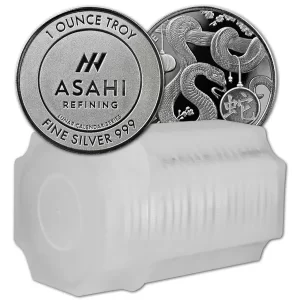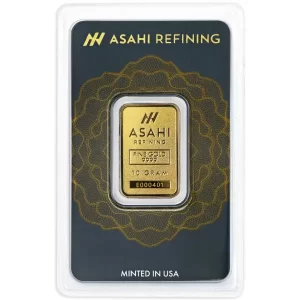The perfect storm for higher gold prices appears to be brewing in the global financial market. For the first time, the European Central Bank (ECB) will announce significant losses due to the epic money-printing saga that took place over the past decade that came to a head during the pandemic. The ECB will now join the Reserve Bank of Australia, National Bank of Belgium, Bank of England, Bank of Japan, Netherlands Bank, Reserve Bank of New Zealand, Sveriges Riksbank, and the U.S. Federal Reserve, who have all recently announced major losses. This should come as no surprise as there was not one central bank in the world that refused to print massive amounts of currency to keep the economy going during the last decade plus after the collapse of 2008 rather than finding stable ground to stand on, and because of that, this list is set to grow larger as central banks struggle to service increasing debt payments due to high interest rates.
What stands out during this period of significant central bank losses is how the Bank of International Settlements is responding to all of this. Rather than coming up with a plan to turn losses into profits, they continue to sing the same tune that central banks cannot go bankrupt or become insolvent in the traditional sense like a normal citizen or business, and because of this, the public should not worry about their banks having little liquidity to work with. Although, if banks are posting major losses, where would the funds come from for the deposit insurance many of them claim to provide? This is highlighted by the Bundesbank in Germany that will post a comparably modest loss of $28 billion USD, a loss that the BIS pointed out would mean insolvency for a normal company, not for a central bank, but why?
The answer to that question is two-fold. First off, one of the reasons the BIS considers central banks immune from court-ordered bankruptcy is a bit paradoxical in nature. On the one hand, they point out that injecting such massive amounts of currency into the economy, currency that was then in large part deposited with the bank, is causing interest payments on those deposits to cause pain for the central bank that originally issued the banknotes. However, on the other hand, the BIS clearly states that central banks are indirectly backed by public money, which in layman terms is referring to a bail-in using public deposits. So the same deposits that are choking out these banks with debt servicing interest payments, can also be used to cover the debts they are producing… confusing right? Although, what it means for the public is very straightforward: as a depositor with a bank, you have agreed to loan them your currency, which means, if they need it in a pinch to bail themselves out so they can keep operating, they will. What that means for the citizen deposits they absorbed is another story. The second reason the BIS believes central banks cannot go insolvent is closely related to the first, however, rather than bailing in existing depositor funds, the central bank can just turn on the money printers and create whatever is needed to pay off debts. As Alan Greenspan once said in paraphrase when he was Chairman of the Federal Reserve, “we can guarantee cash payments out as far as you’d like, we just cannot guarantee their purchasing power.” In other words, the central banks can print and print, but the purchasing power held by citizens will shrink and shrink as more currency spews into circulation to cover bank debts.
This string of loss announcements from world central banks should come as a warning for citizens around the world that keep a majority of their wealth held in the bank – at any given time, the bank can either bail your assets in, or print them into uselessness. Holding silver and/or gold outside the banking system, allow you to circumvent the potential for the above to happen, or to at least lessen its negative impact.
The second side of this coin that needs to be considered to answer our previous question of ‘why?’ is the timing in which all of these major central bank losses are occurring. At the same time many major central banks are announcing historic losses, the very same central banks have also been buying an asset that has precedence for being re-valued overnight, which theoretically can be used to cover the very same losses being announced, that being gold. The most glaring revaluation was after the gold confiscation act in the early 1930s when the U.S. government demanded citizens turn in their gold for $20.67 per ounce, then the very next year re-valued gold to $35 per ounce creating massive wealth for the government, and almost cutting citizen purchasing power in half relative to gold. Just in the last couple years, Turkey requested citizens sell their gold to the government to help support the dying Turkish Lira, after which point, the Lira nosedived relative to gold. The same thing appears to be on the horizon on a global scale.
It should not go unmentioned that the last time central banks faced such widespread losses was in the 1970s when interest rates needed to be brought above 19% to tame inflation – that same time period is when gold went parabolic to help central banks offset the losses they were incurring. Again, showing how important it is to hold gold during times of economic uncertainty due to the shiny yellow metal acting as the perfect shock absorber when a countries’ currency losses value rapidly.
If you can see what is coming with central bank after central bank announcing major losses due to widespread recklessness regarding currency printing, silver and/or gold offers the best protection. During a time of unprecedented currency printing, we are also seeing unprecedented central bank gold buying, and that is up to you to decide if that is a coincidence or not. One former U.S. President that understood the importance of bypassing central banks was Abraham Lincoln, who began printing his own greenbacks during the civil war rather than accepting notes printed by the then central bank. The below 1oz Abraham Lincoln Silver Round out of the Golden State Mint is a tribute to a sound money believer, as well as being sound money itself, offering purchasing power protection to its holder.
 Hi,
Hi,






















